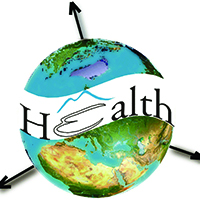Spatial characteristics of men who have sex with men and transgender women attending HIV voluntary counselling and testing in Bangkok, Thailand, 2005-2015

Accepted: 6 March 2020
HTML: 41
All claims expressed in this article are solely those of the authors and do not necessarily represent those of their affiliated organizations, or those of the publisher, the editors and the reviewers. Any product that may be evaluated in this article or claim that may be made by its manufacturer is not guaranteed or endorsed by the publisher.
Authors
Spatiotemporal analyses can support Human Immuno-deficiency Virus (HIV) prevention programmes by identifying locations of at-risk populations in space and time, and their proximity to HIV testing and prevention services. We assessed residential proximity to HIV testing venues for Men who have Sex with Men (MSM) and Transgender Women (TGW) attending Voluntary Counselling and Testing (VCT) at a large urban MSM clinic in Bangkok, Thailand in the period 2005-2015. We mapped clientprovided spatial data and HIV testing venues, calculating distance from residence to venues for VCT clients between i) September 2005-December 2009; ii) January 2010-September 2013; and iii) October 2013-May 2015. We assessed spatial characteristics across times, evaluating autocorrelation of HIV prevalence and visit density using Moran's I. Among 8,758 first-time VCT clients reporting geographic information from 2005-2015 (by period: 2737, 3917, 2104), 1329 (15.2%) lived in postal codes ‰¤5 km from the clinic. Over time, the proportion living in areas covered by Bangkok postal codes ‰¤2 km from any MSM HIV testing venue increased from 12.6% to 41.0% (p<0.01). The proportion living ‰¤5 km from the clinic decreased from 16.6% to 13.0% (p<0.01). HIV prevalence and clinic visit density demonstrated statistically significant non-random spatial patterning. Significant non-random patterning of prevalent infection and client visits highlighted Bangkok's urban HIV epidemic, clinic proximity to clients, and geographic reach. Clients lived closer to testing venues, yet farther from the urban MSM clinic, over time. Spatiotemporal characteristics of VCT clients can help assess service accessibility and guide targeted prevention planning.
Supporting Agencies
Centers for Disease Control and Prevention, Thailand Ministry of Public HealthHow to Cite
PAGEPress has chosen to apply the Creative Commons Attribution NonCommercial 4.0 International License (CC BY-NC 4.0) to all manuscripts to be published.

 https://doi.org/10.4081/gh.2020.790
https://doi.org/10.4081/gh.2020.790




